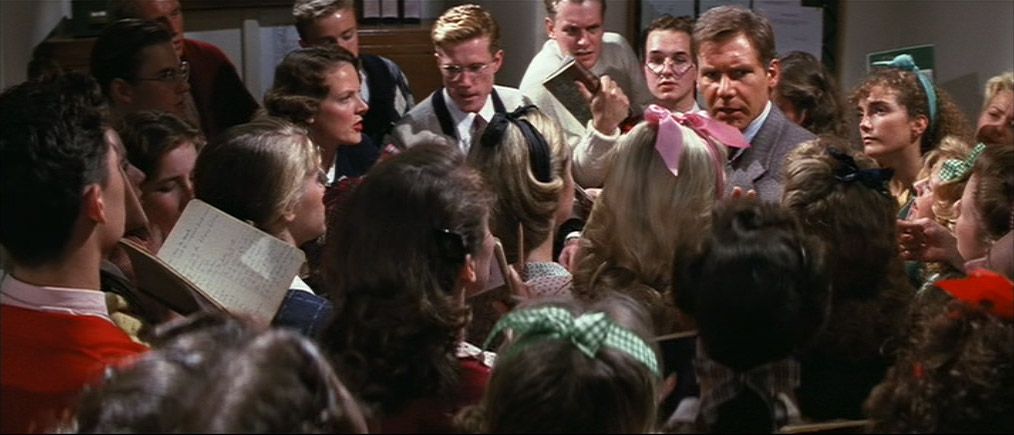
Film budget negotiations are consistently cited as one of the silver screen’s greatest challenges, a high-stakes arena where creative vision collides with financial realities. Beyond the glittering facade of movie premieres and award nights, the real drama often unfolds behind closed doors, in the intricate dance of budget talks and the meticulous crafting of contracts. It’s in this complex ecosystem that partnerships are forged, or, as is often the case, irrevocably fractured.
Indeed, the journey from script to screen is paved with financial decisions, each one a potential flashpoint for disagreement. Producers, even the most seasoned veterans, frequently grapple with the monumental task of planning and negotiating budgets that can sway from a modest USD 3-4 million to a staggering USD 200 million. It’s a landscape fraught with variables, hidden costs, and the ever-present demand to balance artistic ambition with fiscal responsibility. When these variables aren’t meticulously managed, or when expectations diverge too widely, the result can be a flat-out refusal to collaborate, leaving promising projects stalled and partnerships in disarray.
This deep dive aims to unravel the core budget and contract challenges that push producers to the brink. We’ll examine the granular details that, when mismanaged, can become insurmountable obstacles, fostering an environment where even major players might find themselves unable to work together. From the fundamental breakdown of film costs to the strategic nuances of pre-negotiation, understanding these critical areas is paramount to not only avoiding conflict but also building resilient, successful film productions.
1. **Above-the-Line vs. Below-the-Line: The Foundational Fiscal Divide**At the very heart of film production budgeting lies a crucial dichotomy: above-the-line (ATL) and below-the-line (BTL) expenses. These aren’t just arbitrary numbers; they are the fundamental building blocks that shape every production, dictating where the lion’s share of financial resources will be allocated. When producers approach a project, one of the earliest and most critical points of alignment, or potential conflict, emerges from how these foundational categories are understood and valued.
Above-the-line costs, typically claiming a substantial 30% of the total budget, are focused on the creative and developmental backbone of the film. This category encompasses everything from the initial spark of an idea to the hiring of the leading talent. Specifically, ATL covers development expenses, story rights, screenplay costs, and, crucially, the compensation for key creative minds such as producers’ fees, the director’s remuneration, and the principal cast salaries. Disagreements over these initial, high-profile expenditures can set a confrontational tone from the project’s inception, as creative stakeholders often vie for a larger piece of this significant slice of the budget.
In stark contrast, below-the-line costs represent the physical execution of the film, making up a formidable 45% of the total budget—the largest single share. This segment is dedicated to the tangible elements that bring a film to life, including the wages of the hardworking crew, the essential equipment rentals that capture every shot, and all general production expenses required on set. While ATL costs represent the vision, BTL costs embody the painstaking effort of making that vision a reality, demanding meticulous planning and a keen understanding of operational logistics. Producers who fail to establish clear agreements on these fundamental budgetary splits, or who harbor vastly different philosophies on their proportional importance, often find their collaborative efforts crumbling before production even truly begins.
The intricate balance between investing in high-caliber talent and securing top-tier production capabilities is a constant source of negotiation. If one producer prioritizes star power while another insists on superior visual effects or location scouting that falls under BTL, an impasse can quickly form. These core distinctions are more than just accounting categories; they are philosophical battlegrounds that can determine the very nature, quality, and financial viability of a film, making consensus here absolutely essential for any successful partnership.

2. **Department-Specific Allocations: The Micro-Battles for Resources**Once the broad strokes of above-the-line and below-the-line budgets are established, the financial precision deepens into department-specific allocations. This level of meticulous breakdown is where the rubber meets the road, as specific percentages of the BTL budget are earmarked for various departments, each with its own crucial needs and demands. It’s a highly detailed process that requires careful consideration of both fixed and variable expenses, and it’s a frequent breeding ground for micro-battles over resources that can test the limits of producer collaboration.
The context provides clear guidelines for these allocations: Production Staff typically accounts for 25-30% of the BTL budget, reflecting the extensive human power required to manage the daily operations of a film set. The Art Department, responsible for the visual aesthetic, claims 15-20% of the BTL budget, requiring a delicate balance of precision and artistic vision from the production designer. Meanwhile, the Camera and Lighting departments, crucial for capturing compelling visuals, are allocated 20-25% of the BTL budget. Lastly, post-production, a critical phase that can significantly influence a film’s final polish, commands 20-25% of the *total* budget, highlighting its substantial impact beyond the primary BTL spending.
These seemingly straightforward percentages become highly contentious when creative aspirations clash with financial limitations. For instance, a director might push for elaborate set designs, requiring a larger allocation for the Art Department, which could impinge on the budget available for top-of-the-line camera equipment or a larger production staff. The line producer, working closely with department heads, faces the challenging task of crafting budgets that not only match creative aspirations but also remain fiscally viable. Any perceived imbalance or unfair allocation can lead to resentment and a lack of cooperation among key team members, directly impacting the film’s smooth operation.
Ultimately, a producer’s ability to navigate these departmental negotiations, balancing individual department needs with the overarching production goals, is a testament to their leadership and financial acumen. When producers fail to present a unified front or to facilitate equitable compromises among department heads, the project’s internal dynamics can quickly devolve, making collaborative work almost impossible. These detailed budget allocations, therefore, represent more than just numbers; they are a delicate ecosystem where effective negotiation and clear communication are vital to preventing internal strife and ensuring that every dollar performs its best role.
3. **Hidden Costs and Contingencies: The Unseen but Expected Budget Vampires**Even the most meticulously planned film budgets can be derailed by the unforeseen, those ‘hidden costs’ and ‘mishaps’ that lurk in the shadows of production. Successful productions, with exceptional intelligence, recognize this inherent unpredictability and strategically set aside a crucial 10-15% of their total budget specifically for contingencies. This buffer is not merely a suggestion; it’s an essential safety net, a golden star in financial planning that distinguishes robust productions from those vulnerable to every unexpected plot twist.
These ‘budget vampires’ can emerge from a variety of sources, turning an otherwise smooth production into a financial nightmare. Equipment malfunctions are a classic culprit, demanding immediate repairs or replacements that weren’t initially budgeted. Weather disruptions, from unexpected storms halting outdoor shoots to extreme heat necessitating additional cooling measures, can incur significant delays and costs. Furthermore, the dynamic nature of a film set often necessitates additional crew needs, perhaps for a complex shot requiring more hands-on deck or for extended hours due to unexpected creative changes. Overtime hours, which typically cost double after 12 hours of work, are another notorious hidden cost, quietly escalating expenditures if not managed proactively.
Beyond these operational surprises, a critical component of risk management includes robust insurance coverage. Production insurance, for instance, is not a luxury but a necessity, guarding against those ‘unexpected plot twists’ that can lead to significant financial loss. Scene-stealing general liability coverage typically demands 2-3% of the total budget, protecting against various claims. Errors and omissions (E&O) insurance adds another 1-2%, serving as a shield against potential copyright claims and creative disputes, which are alarmingly common in a highly litigious industry. Without clear agreement on these buffers and protections, producers risk exposing their project to financial catastrophe, turning disagreements over a few percentage points into a multi-million-dollar liability.
Tracking every penny spent from this contingency safety net requires dedication and elegant demeanor. Production teams must meticulously document each expense, ensuring that every request is evaluated for its necessity and impact. Automated cost-tracking systems are invaluable here, reducing accounting overhead and providing real-time visibility into spending, helping to prevent disputes. Disagreements among producers over the size of this buffer, or the strictness with which contingency funds are managed, can signal a fundamental lack of trust or a differing risk appetite, quickly leading to an impasse. After all, protecting investments with precision is paramount, and a shared understanding of risk mitigation is key to a harmonious partnership.
4. **Creating a Detailed Film Budget Breakdown: The Blueprint for Alignment (or Discord)**Just as a perfectly executed stunt sequence requires meticulous choreography, a film’s budget demands an equally precise and detailed breakdown to ensure alignment among all stakeholders. This isn’t merely about listing expenses; it’s about crafting a master blueprint that clarifies financial expectations, identifies specific needs, and anticipates potential challenges. A poorly detailed budget is a recipe for discord, while a thoroughly elaborated one serves as a powerful tool for collaboration, highlighting the difference between a project that soars and one that stalls due to fundamental disagreements.
The modern production landscape introduces new complexities that must be meticulously accounted for in this breakdown. The spotlight now shines brightly on virtual production setups, which can claim a significant 20-30% of the technical budget. This substantial allocation reflects the growing reliance on advanced technology to create immersive and dynamic cinematic experiences. Furthermore, the rise of streaming platforms has reshaped post-production costs, often demanding about 15-20% more compared to traditional releases. These new financial demands necessitate a granular approach to budgeting, where every technological shift and distribution channel is factored into the initial planning stages.
Revolutionizing this intricate process are cutting-edge digital film budget templates and software solutions, like Filmustage’s automation suite. While industry veterans such as Movie Magic Budgeting and Showbiz Budgeting have long dominated traditional desktop solutions, platforms like Filmustage are redefining production planning. They seamlessly merge script breakdown with financial management, automatically pre-filling budgeting templates from script analysis and factoring in everything from DOOD data (Day Out of Days) to tax considerations. This technological leap allows for custom field adjustments and fringe calculations, maintaining formula integrity while offering modern spreadsheet flexibility. Crucially, upcoming features like real-time cost estimation promise to transform budget negotiations into a streamlined, intelligent process adaptable to a production’s unique needs.
Without such detailed breakdowns and the sophisticated tools to create them, producers face an uphill battle. Vague line items or broad estimates become fertile ground for misunderstandings, as each party may hold a different assumption about what specific figures entail. This lack of transparency can erode trust, leading to accusations of misallocation or overspending. When producers are not aligned on the exact blueprint of expenditures, from the nuances of virtual stages to the specific demands of a streaming release, their partnership can fracture, leaving the budget—and the film—in limbo. A truly detailed budget is therefore not just a financial document; it’s a foundational agreement, a shared understanding that is indispensable for any successful collaboration.
5. **Market Research and Comparable Projects: The Reality Check that Divides**In the high-stakes world of film production, understanding the market landscape is as crucial as mastering the script. Producers must act like seasoned detectives, hunting for valuable data about similar films in their genre and audience range. This process of market research and analyzing comparable projects serves as a vital reality check, informing budget parameters and strengthening negotiating positions. However, differing interpretations of this crucial data can easily become a wedge between producers, leading to significant disagreements on financial viability and projected returns.
Thorough research involves delving into the performance metrics, production costs, and distribution strategies of projects similar in genre and budget range. This deep dive provides invaluable context, helping to establish realistic budget parameters that are grounded in industry precedent rather than mere speculation. When one producer comes armed with exhaustive data demonstrating market trends and typical cost structures, while another operates on intuition or outdated figures, the stage is set for a challenging negotiation. Understanding current market trends is not just about financial prudence; it’s about shaping a persuasive argument for resource allocation and potential revenue streams.
The most valuable insights for this crucial analysis often come from a trifecta of industry intelligence. The Motion Picture Association (MPA) offers a treasure trove of industry insights, providing macro-level data on film performance and market dynamics. IMDbPro serves as a powerful tool for performance tracking, offering granular details on individual film budgets, box office numbers, and critical reception. Meanwhile, Variety Insight provides essential production intelligence, shedding light on the behind-the-scenes costs and development timelines of various projects. Accessing and collectively interpreting these data points is fundamental to creating a unified financial vision.
Yet, even with access to the same information, producers can draw vastly different conclusions, especially when personal risk aversion or aggressive ambition comes into play. One might argue for a leaner budget, citing examples of successful indie films with limited resources, while another insists on a higher spend to match the production values of a blockbuster. These discrepancies in interpreting market data can lead to fundamentally different expectations regarding budget size, revenue projections, and ultimately, the financial risk each producer is willing to undertake. When this reality check divides rather than unites, the foundation for a collaborative partnership can crack, leaving producers at an impasse.
6. **Setting Realistic Targets and Walkaway Points: The Stakes of Strategic Boundaries**Mastering negotiations in film production demands not only a keen eye for detail but also the strategic foresight to establish clear financial boundaries and targets. These ‘walkaway points’ are not signs of weakness but rather anchors of strength, defining the limits beyond which a producer is unwilling to proceed. For projects spanning the USD 5 million range, budgets typically fluctuate from USD 3-4 million to USD 10 million, while larger-scale projects between USD 70-200 million adhere to entirely different financial parameters. A misalignment in these fundamental target ranges, or a refusal to acknowledge realistic walkaway points, can quickly transform a negotiation into a stalemate.
Before committing to any project, thorough research on global markets is indispensable, much like analyzing international trends and consumer behaviors. Reports from authoritative sources such as Comscore and the European Audiovisual Observatory provide invaluable insights for mapping market opportunities, helping producers understand the unique prospects each market presents—from merchandise sales to streaming rights. This global perspective is crucial for shaping a comprehensive strategy, ensuring that financial targets are not only realistic but also globally competitive. For virtual stage productions, for example, it is essential to allocate approximately 25-30% of the budget toward technical setup, a specific target that must be agreed upon to ensure project viability.
Understanding your audience is equally crucial in shaping your financial strategy. Different demographics and geographic markets will respond to different genres and production values, influencing potential revenue and, by extension, the acceptable budget ceiling. A producer deeply invested in a niche market might have different financial expectations than one targeting a broad international audience. When these strategic considerations clash, particularly regarding the commercial viability and financial ambition of a project, the path to a mutual agreement becomes incredibly difficult.
Ultimately, the ability to establish clear, mutually agreeable financial targets and to respect each other’s walkaway points is a cornerstone of effective producer collaboration. If one party pushes beyond another’s predefined financial boundaries, or if there’s a fundamental disagreement on what constitutes a ‘realistic’ return on investment for a given budget, the partnership is likely to falter. These strategic boundaries are not arbitrary lines in the sand; they are informed by market realities, financial capabilities, and personal risk assessments. When producers fail to find common ground here, the stakes are too high, and a ‘refusal to work together’ becomes an almost inevitable outcome.
7. **Department Head Negotiations: Balancing Creative Vision with Fiscal Prudence**Beyond the sweeping financial blueprints, the true test of a producer’s collaborative spirit often emerges in the granular arena of department head negotiations. Here, the grand vision of a film is translated into actionable budgets for individual units—from costume design to visual effects—each vying for resources to realize their specific creative objectives. It’s a delicate ballet, demanding that producers offer both strategic guidance and the space for departmental autonomy.
Successful producers understand that forcing mandates from above can stifle creativity and breed resentment. Instead, the most effective approach often involves presenting choices, framing budgetary discussions not as battles, but as collaborative problem-solving sessions. For instance, a conversation might pivot around options: “We can allocate USD 200.00 for additional talent in this scene, or we can compensate existing team members for extended hours to achieve the same effect.” This empowers department heads, bringing them into the decision-making process and fostering a shared sense of ownership.
The challenge lies in recognizing and valuing individual talents and departmental needs while rigorously upholding the overarching production goals. When producers fail to facilitate these crucial internal negotiations with an understanding of both the creative imperative and the fiscal reality, friction is inevitable. A disagreement over, say, the allocation for special effects versus practical sets can quickly escalate if producers don’t stand as a unified front, mediating and finding common ground that respects both artistic ambition and the bottom line.
When internal dialogues falter, the entire project can suffer. Producers who struggle to build consensus among department heads, perhaps due to differing priorities or a lack of unified financial strategy, find themselves facing resistance and inefficiency. This isn’t just about saving money; it’s about optimizing every dollar to achieve the best possible cinematic outcome, and without harmonious negotiations at this micro-level, the grander vision remains perpetually out of reach, sometimes leading to an outright refusal to move forward.

8. **Vendor and Service Provider Strategies: The Art of External Partnerships**Just as a director meticulously casts actors for their roles, producers embark on a similarly critical “casting process” when selecting external vendors and service providers. These partnerships, spanning everything from equipment rental houses to catering services and special effects studios, are integral to a film’s execution. Each choice significantly impacts the production’s quality, efficiency, and ultimately, its financial health. A misalignment among producers on these external partnerships can introduce unforeseen budgetary strains and operational bottlenecks, jeopardizing the project’s very foundation.
Key considerations for evaluating potential vendors extend far beyond their initial quote. Producers must delve into their historical performance records, scrutinizing their track record for reliability, adherence to timelines, and consistency in delivering high-quality work. The nuances of financial arrangements—payment schedules, late fees, and potential discounts—must be meticulously scrutinized. Furthermore, a thorough assessment of work quality and, critically, their emergency response capabilities, ensures that the production is resilient against unexpected challenges, from equipment malfunctions to last-minute creative changes.
The adage “quality outweighs cost considerations alone” resonates deeply in this domain. While budget constraints are omnipresent, opting for the cheapest vendor without a comprehensive evaluation can prove to be a false economy, leading to costly reshoots, delays, or subpar output. Producers who prioritize short-term savings over long-term value, or who cannot agree on the essential criteria for selecting a reliable partner, are setting the stage for future conflict. A breakdown in trust regarding these external relationships can quickly lead to one producer questioning the other’s judgment, making collaborative decision-making exceptionally difficult.
When producers cannot find common ground on these critical external engagements, the integrity of the project itself hangs in the balance. One producer might advocate for a boutique effects house known for its artistry, while another insists on a larger, more established, but potentially less flexible, studio based on cost. These philosophical differences, if not carefully navigated and reconciled, become formidable obstacles. The inability to agree on who to trust with vital components of the production can easily culminate in a stalemate, where the path forward is obscured by unresolved disagreements over who will deliver the essential magic.
9. **Union and Labor Negotiations: Navigating Industry Standards and Worker Protections**In the complex ecosystem of film production, union and labor negotiations stand as a formidable, yet essential, facet of budget planning and operational integrity. These discussions are far from mere formalities; they are pivotal in shaping industry standards, ensuring fair compensation, and mandating crucial safety measures for the dedicated professionals who bring stories to life. Organizations like the International Alliance of Theatrical Stage Employees (IATSE) have, through diligent negotiation, fundamentally transformed working conditions, demanding attention and strategic financial allocation from producers.
Recent groundbreaking agreements underscore the profound impact of these negotiations. The industry has seen substantial commitments to health and pension funding, reaching an impressive USD 670.00 million, a figure that must be meticulously factored into every comprehensive budget. Furthermore, the Hollywood Basic Agreement introduced critical protections regarding the implementation of artificial intelligence, a burgeoning concern that demands proactive financial and ethical planning. These stipulations are non-negotiable foundations upon which modern film productions are built, reflecting a societal and industrial shift towards greater worker security.
Beyond IATSE, unions such as the Teamsters and Basic Crafts, representing approximately 8,000 industry professionals—from indispensable drivers to specialized animal handlers—have successfully secured comprehensive protections against outsourcing. This ensures that skilled labor remains valued and employed within the industry, but also places specific financial demands on production budgets. When producers approach a project, these mandates are not footnotes; they are integral components of financial planning. Disagreements can arise when one producer seeks to circumvent these established protections for perceived cost savings, while another insists on full compliance, creating a direct conflict over ethical practices and legal obligations.
The financial implications of these union agreements are substantial and require unified producer understanding. Ignoring or underestimating these costs can lead to severe penalties, production delays, and a damaged reputation within the industry. If producers are fundamentally misaligned on how to integrate these vital labor costs into the budget, or if there’s a differing philosophy on the value of adhering to established union standards, the collaborative effort can quickly crumble. This is a sphere where ideological differences clash directly with financial realities, often leading to impassable stalemates that halt projects in their tracks.
10. **Leveraging Digital Tools: The Future of Budget Planning**In an era where film production demands unprecedented efficiency and precision, technology has emerged as the unsung hero, revolutionizing how budgets are conceived, managed, and negotiated. Gone are the days when clunky spreadsheets alone dictated the financial destiny of a multi-million-dollar project. Today, innovative digital tools are transforming the complex dance of budget planning into a streamlined, intelligent process, offering producers a clear path to alignment—or, conversely, highlighting their resistance to modernization.
At the forefront of this technological revolution are cutting-edge automation suites like Filmustage. While stalwarts such as Movie Magic Budgeting and Showbiz Budgeting have long served as industry standards for traditional desktop solutions, platforms like Filmustage are redefining the paradigm. These systems seamlessly merge script breakdown with comprehensive financial management, automatically pre-filling budgeting templates directly from script analysis. This intelligent integration factors in everything from intricate DOOD (Day Out of Days) data to complex tax considerations, eliminating tedious manual entry and significantly reducing the margin for error.
These advanced platforms bridge the historical gap between classic template precision and the dynamic flexibility of modern spreadsheets. They empower producers with the ability to implement custom field adjustments and meticulous fringe calculations, all while rigorously maintaining formula integrity during exports. Furthermore, the promise of upcoming features, such as real-time cost estimation, is set to fundamentally reshape budget negotiations. Imagine having immediate, accurate financial projections at your fingertips, adapting dynamically to every change, making discussions less about speculation and more about informed, data-driven decisions.
However, the adoption of such transformative technology itself can become a point of contention among producers. One might champion the efficiency and accuracy these tools offer, while another, perhaps rooted in traditional methodologies, might resist the learning curve or question the investment. This divergence in embracing technological advancements can lead to a significant breakdown in collaborative planning. When one producer is armed with real-time data and automated insights, while another relies on outdated processes, the disparity in their negotiating positions becomes stark, often culminating in an impasse where the project’s future hangs in the balance due to technological incompatibility.
Read more about: 14 Budgeting Power Plays: Essential Strategies for Lasting Financial Health and Stability

11. **Comprehensive Risk Management: Safeguarding Investments and Production Integrity**In the unpredictable world of film production, robust risk management strategies are absolutely essential. Successful productions distinguish themselves by meticulously safeguarding investments through contingency buffers, comprehensive insurance, and rigorous legal protections. When producers aren’t aligned on these elements, it often becomes a significant source of contention and refusal to collaborate.
The cornerstone of this safeguard is the contingency buffer, a dedicated financial safety net. Productions wisely allocate 10-15% of their total budget for unexpected costs, covering everything from broken cameras to weather disruptions. Merely setting aside funds isn’t enough; every penny requires meticulous tracking. Automated cost-tracking systems are invaluable, providing transparent, real-time visibility. Disagreements among producers over the buffer’s size or management can quickly signal fundamental lack of trust, leading to early breakdowns.
Beyond the contingency fund, a comprehensive suite of insurance acts as a critical shield against catastrophic financial loss. Production insurance is a necessity, guarding against “unexpected plot twists.” General liability (2-3% of budget) protects against various claims, while Errors and Omissions (E&O, 1-2%) defends against copyright claims and creative disputes. Workers’ Compensation ensures crew safety. Failure to agree on the scope or cost of these vital protections leaves a production dangerously exposed, escalating minor budgetary squabbles into multi-million-dollar liabilities.
For projects exceeding USD 5 million, completion bonds become vital, typically requiring 2-3% of the budget. These offer crucial protection, encompassing everything from star salaries. Legal measures, like “right to assignment” clauses and listing bond companies as “additional insured,” further solidify this. When producers cannot agree on the fundamental investment in these layered risk mitigation strategies, the entire project faces undue peril, and collaboration becomes untenable as trust in safeguarding the investment erodes.
12. **The Contractual Crucible: Forging Legal Alignment for Project Success**At the bedrock of every successful film production lies a meticulously crafted legal framework: the film production company contract. These agreements define the terms, conditions, rights, responsibilities, and obligations of every party. From financing to distribution rights and intellectual property, contracts are indispensable for managing expectations, mitigating risks, and preventing disputes that can lead producers to refuse collaboration.
The key components are multifaceted. The “scope of work” outlines deliverables, while “payment terms” detail financial arrangements including budgets and schedules. “Rights ownership” determines who retains intellectual property—a frequent flashpoint. Confidentiality clauses, liability provisions, and termination conditions are essential. When producers fail to achieve clarity and mutual agreement on these foundational components, especially roles and financial obligations, the production can devolve into confusion and conflict.
Legal considerations are paramount. Copyright ownership dictates rights to creative elements, governed by frameworks like the United States Copyright Act of 1976. Liability clauses protect against legal claims (copyright infringement, breach, personal injury). Laws and regulations, such as the Fair Labor Standards Act for crew wages or intellectual property laws, profoundly influence contract terms. Producers must align on how to navigate these legal landscapes; divergence can lead to non-compliance, fines, or debilitating legal battles.
Effective contract management is a proactive strategy for success. This involves clear communication, detailed documentation, and regular contract reviews. Pitfalls of overlooking details are severe: vague terms lead to misunderstandings, neglected ownership rights ignite IP disputes, and inadequate budget or termination clauses create financial overruns. Producers prioritizing these best practices—often with legal counsel—build resilient partnerships. Disagreements over precise language or the fundamental allocation of rights are often why producers reach an impasse, transforming collaboration into a legal minefield.
The journey of bringing a film to the silver screen is, at its core, an intricate orchestration of creative vision and stringent financial realities. As we’ve explored, the points of friction among major producers, leading to a flat-out refusal to collaborate on the budget, are often rooted in a complex interplay of foundational fiscal divides, micro-battles for resources, and divergent philosophies on risk and technology. From the initial allocation of above-the-line talent fees to the granular negotiations with department heads and external vendors, and from embracing digital budgeting tools to meticulously crafting comprehensive risk management frameworks and ironclad legal contracts, every decision carries the potential for either profound alignment or irreparable fracture. The producers who master these multifaceted challenges—who can harmonize artistic ambition with fiscal discipline, embrace technological advancements, and navigate the intricate legal landscape with a shared vision—are the ones who not only prevent breakdowns but also pave the way for cinematic triumphs. Their ability to forge consensus amid contention is the real movie magic, ensuring that the show, indeed, goes on.












